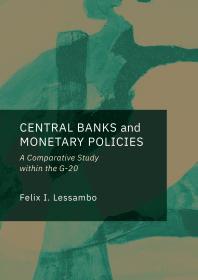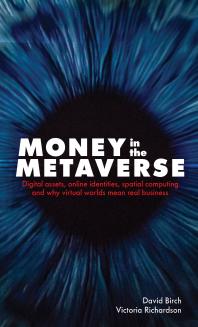 |
Learning Resource Centre Monthly Bulletin |
 |
 |
Learning Resource Centre Monthly Bulletin |
 |
| New Books |
 Ebook: FN439 Central Banks and Monetary Policies : A Comparativ By Felix Lessambo |  Ebook: FN440 Money in the Metaverse : Digital Assets, Online Id By David. Birch and Victoria Richardson |  Ebook: FN441 China`s Trump Card : Cryptocurrency and Its Game-C By Raymond Yeung |
| Click Here to learn about the Recent Books added to our collection on different topics of Management. |
| Articles |
| Hybrid financing in a dual‐channel supply chain with asymmetric demand information. By Zhang, Baofeng;Xiao, Shuang International Transactions in Operational Research. Mar2026, Vol. 33 Issue 2, p1296-1322. 27p. Abstract :This study delves into the interaction between hybrid financing and asymmetric demand information within a dual‐channel supply chain. In this setup, the supplier directly sells to customers and also through a capital‐constrained retailer. We investigate a unique financing approach involving a blend of bank loans and supplier equity investment to support the retailer`s operational (procurement and marketing) activities. Analyzing the equilibrium strategies under both symmetric and asymmetric information settings yields intriguing insights. In the case of symmetric information, we find that the retailer`s equilibrium order quantity decreases with the potential market size under hybrid financing, contrary to traditional notions. When asymmetric information is present, a higher acceptance of supplier equity investment by the retailer tends to lead to order quantity distortion downward, increasing signaling costs. Furthermore, a greater proportion of supplier equity investment prompts the retailer to order more products, ultimately boosting profits for both the retailer and supplier. This suggests that supplier equity investment can enhance supply chain efficiency and alleviate the double marginalization effect. | |||
| Frenemies: Exploring interfirm credit between an incumbent and a capital‐constrained startup. By Chamnisampan, Netnapha;Wu, Cheng‐Han International Transactions in Operational Research. Jan2026, Vol. 33 Issue 1, p631-681. 51p. Abstract :collaboration, which requires the incumbent to decide on the trade‐off between profit sharing and market erosion. We consider two cases of financial sufficiency: (i) sufficient funds for production that satisfy the loan amount required for the startup firm`s production and (ii) limited funds for production that are insufficient for the startup firm`s needs and limit the startup firm`s production. We find that bank financing is not always beneficial to firms. Specifically, under limited funds for production, when a startup has moderate initial available funds, he will opt for profit sharing with the incumbent and prefer interfirm credit, allowing both firms to achieve a win‐win outcome. However, suppose the incumbent strategically determines the interest rate. In that case, mixed financing becomes advantageous for both firms when the startup firm`s initial available funds are high and the loan amount is ample. Finally, when the startup predetermines the loan amount, he will pursue economic funding if his product is competitive. | |||
| Does the sequencing of accounting principles courses affect academic performance? By Delaney, Jason J.;Ellis, Yvonne;Routon, P. Wesley;Stephenson, Andrew V. Accounting Education. Dec2025, Vol. 34 Issue 6, p887-912. 26p. Abstract :Research has documented the difficulty business and accounting students have in introductory accounting courses, and significant effort has focused on changes internal to the courses to try to improve student outcomes. Internationally and across the United States, most accounting programs separate introductory financial (FA) and managerial (MA) accounting into two independent courses because the course content and purpose of each are distinct. One underexplored way institutions might affect student outcomes is by determining the sequence in which students take principles courses at the same cognitive level. We use student data from a diverse non-selective institution, with 100 nations represented, combined with several econometric approaches to identify the effect, if any, of course ordering on course outcomes and long-term student outcomes for business and accounting students. Our results recommend that the practical and optimal sequencing method for accounting majors is FA before MA. For other students, we find evidence of an `accounting burnout effect`: students perform noticeably worse in their second accounting course regardless of sequencing, or do noticeably worse in both if taken simultaneously, another type of burnout. Given the similarities of accounting programs internationally and the diverse nature of our data, our findings can be generalized to international audiences. | |||
| Do you wish to explore more articles? Just try using one of the full-text databases below! | |||
| Faculty - Click here to recommend new topics in Finance |
| News |
Wish to see more News? Click the link below: |